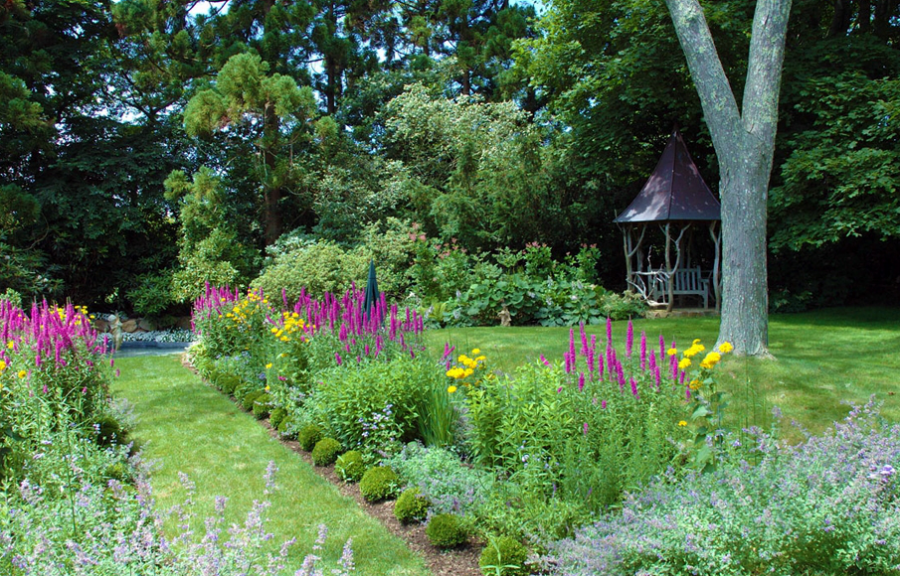Simple Gardens: Basic or Little Maintenance

The entire idea of designing a simple garden is based on the ability to care for a garden with basic or little maintenance. Please keep in mind that maintenance is vital to the existence and preservation of any project, and low maintenance does not mean any maintenance. To create a garden that looks simple and beautiful, choosing plant material that is compatible with the kind of existing soil, sunlight, and layout or design of the beds and borders are extremely important.
Ensuring a good soil before planting will help improve the growth of trees, flowers and shrubs, and help them staying healthier for a longer period of time. It is important to know the needs of the soil in order to be able to improve it, and most soil problems are corrected by adding natural organic conditioners. There are different kinds of compost or well-rotten manure that will improve any kind of soil by adding nutrients and improving drainage. Compost materials or soil conditioners like peat moss and organic fertilizers should be well mixed into the existing soil to achieve better results.
The best choices for plant material are native or well-adapted plants. Native plants will be naturally suited to your growing conditions and will never look out of place. They have already adapted to tolerate extremes of cold, heat, drought or moisture, and will be less vulnerable to insects, predators and diseases. Native plants also need less fertilizer or spraying for their preservation.
Evergreen trees or shrubs with dark green glossy leaves should be located in the corners and centers of your borders to provide year-round structure, and give something to look at during the winter months. Ornamental grasses with “bottlebrush-shaped” seed-heads in different heights, textures and varieties work well to help break-up the rigid look of evergreens. Spring and summer bulbs like the Allium Globe Master, with its purple globe-shaped flowers, or the Cana, with its orchid-like flowers of red, orange, or yellow, when planted in autumn or early spring, help contribute to soil aeration and provide a splendid show during the season. Lambs’ Ears with their wooly, silver evergreen-shaped leaves and spikes of tiny purple flowers, Salvia’s oval leaves topped with violet-purple flowers, Calamintha’s mint-scented flowers, or Agastache with its’ spikey purple or coral-colored flowers, mixed together give the design a more graceful appearance. Additionally, a blend of colors, heights, and scents attract wildlife that will naturally help protect these plants from predators and disease.
Trees, shrubs, and flowers are grouped into flowing drifts that sweep through the border. The back of the border should be planted in a gradation of heights for depth and visual effect, but plants along the edges should be in mixed heights for added interest. This makes maintenance easier when it is time for pruning, “dead-heading” or trimming.
The beds and borders should be contoured, avoiding straight lines. The diagonal of the garden gives it more of a dynamic aspect. Your eye will tend to follow the path along the curved edging of the beds. These undulating edges also make it simple to keep the contours over the years. These curves can always be made deeper or smaller depending on the growth of your garden or yard space.
Ultimately, simple gardens will increase the chances of overall success in your backyard projects. With basic or little maintenance, good soil preparation, selection of well-adapted or native plants, and the design of beds and borders following natural curves, any garden project will be kept simple yet tailored.
Landscape Designer, writer and lecturer Frederico Azevedo is the founder of Unlimited Earth Care, Inc., providing landscape design and maintenance to the Hamptons for over 20 years. For more information; call (631)725-7551 or visit UnlimitedEarthCare.com.



